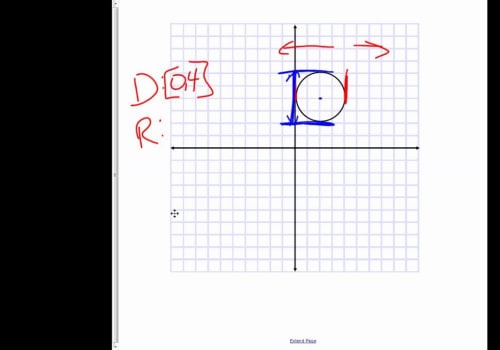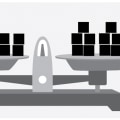Welcome to our comprehensive guide on understanding the difference of squares in algebra. Whether you are a student struggling to grasp this concept or a math enthusiast looking to deepen your knowledge, this article is for you. The difference of squares is a fundamental concept in algebra and plays a crucial role in solving various problems. In this article, we will break down the definition of difference of squares, explain how it relates to factoring, and provide step-by-step examples to help you master this topic.
So, let's dive in and explore the world of difference of squares. In algebra, the difference of squares is a formula used to factor polynomials. It is the product of two perfect square terms with opposite signs, resulting in a difference between the two. The difference of squares is a fundamental concept in algebra and is essential for solving various problems. Let's take a look at some real-life examples to understand its significance. For instance, consider the expression x2 - 9.This can be rewritten as (x + 3)(x - 3), where (x + 3) and (x - 3) are the perfect square terms.
This is known as the difference of squares, as it is the difference between two perfect squares, x2 and 9.Understanding the difference of squares is crucial for students learning algebra. It allows them to simplify and solve complex expressions by factoring them into simpler terms. It is also a useful tool for parents who want to help their children improve their algebra skills.Now, let's dive into some tips and techniques for solving difference of squares problems. The first step is to identify if the expression follows the form of a difference of squares.
Remember, it should have two perfect square terms with opposite signs. Once identified, we can use the formula (a + b)(a - b) = a2 - b2 to factor the expression. To further strengthen our understanding, we can practice solving difference of squares problems with exercises and worksheets. These resources will provide us with more opportunities to apply our skills and reinforce our knowledge. For a comprehensive curriculum on learning algebra, the difference of squares is an essential topic to cover. It serves as a building block for more advanced concepts in algebra and is a crucial skill to have for solving various equations and problems. Lastly, for parents looking for qualified algebra tutors in their area, here are some helpful tips.
It is essential to find a tutor who has a strong understanding of the difference of squares and can effectively teach it to their students. Ask for recommendations from other parents or seek out online tutoring services that specialize in algebra.
Understanding the Difference of Squares
The difference of squares is a fundamental concept in algebra that involves finding the difference between two squared terms. It is a crucial topic for students learning algebra, as it is used to solve various problems and equations. This concept is also important for parents who want to help their children improve their algebra skills, as it forms the basis for more advanced algebraic concepts.A Comprehensive Curriculum for Learning Algebra
Incorporating the difference of squares into a complete algebra curriculum is essential for students to have a thorough understanding of algebra.The concept of difference of squares is a fundamental building block in algebra, and it is used extensively in solving various problems. By incorporating the difference of squares into a complete algebra curriculum, students will not only learn how to solve problems involving this concept, but they will also develop a strong foundation in algebra that will help them tackle more advanced topics in the subject. A comprehensive curriculum for learning algebra should include a detailed explanation of the difference of squares, as well as numerous practice problems to reinforce the concept. This will ensure that students are able to apply the knowledge they have gained and master the skill of factoring difference of squares.
Tips and Techniques for Solving Problems
When it comes to solving problems involving difference of squares in algebra, there are various techniques that can be used. Some students prefer to use the traditional method of factoring, while others may use more modern methods such as the quadratic formula or completing the square.Factoring
The most common and traditional method for solving difference of squares is through factoring. This involves breaking down the expression into its factors and finding the common factors between them.Quadratic Formula
In some cases, factoring may not be possible or may be too complex.In these situations, the quadratic formula can be used to solve for the roots of the expression.
Completing the Square
Completing the square is another method that can be used to solve difference of squares problems. This method involves manipulating the expression to create a perfect square trinomial, which can then be easily factored.Practice Exercises and Worksheets
Applying the knowledge of difference of squares in algebra can be best achieved through hands-on practice. Here are some Practice Exercises and worksheets to help you get a better understanding of this concept.Exercise 1: Simplifying Expressions
Given the expression x2-16, write it as a difference of squares.Answer:
(x+4)(x-4)Exercise 2: Factoring TrinomialsFactor the trinomial x2+6x+9.Answer:
(x+3)(x+3) or (x+3)2Worksheet:Download our free worksheet on difference of squares for more practice problems and solutions. Now that you have practiced solving different types of problems involving difference of squares, you can confidently apply this knowledge to solve more complex algebra problems. Keep practicing and improving your skills!Finding the Right Algebra Tutor
In addition to understanding the concept of difference of squares, it is also important for parents to ensure that their child has the right support and guidance when learning algebra.This is where finding the right Algebra Tutor becomes crucial. With so many options available, it can be overwhelming for parents to choose the best tutor for their child. Here are some tips to consider when looking for a qualified algebra tutor: 1.Qualifications and Experience: Look for a tutor who has a strong educational background in algebra and has experience in teaching the subject. They should have a degree in mathematics or a related field and preferably have experience working with students at your child's grade level.
2.Teaching Style: Every student learns differently, so it's important to find a tutor who can cater to your child's learning style. Some students may need more hands-on activities, while others may excel with visual aids. Ask the tutor about their teaching style and see if it aligns with your child's needs.
3.Availability and Flexibility:
Find out about the tutor's availability and flexibility in terms of scheduling sessions.Make sure they can accommodate your child's schedule and have enough time to dedicate to their learning.
4.Communication:
A good tutor should have open communication with both the student and parents. They should provide regular updates on the student's progress and be available to answer any questions or concerns.5.Reviews and Recommendations:
Don't be afraid to ask for references or read online reviews about the tutor.This will give you an idea of their teaching style, success rate, and overall reputation. By keeping these tips in mind, parents can find a qualified algebra tutor who can help their child excel in the subject. Remember, finding the right tutor can make all the difference in your child's understanding and enjoyment of algebra. By understanding the difference of squares, students can enhance their algebra skills and solve problems more efficiently. With the help of practice exercises, worksheets, and a comprehensive curriculum, students can develop a strong foundation in algebra.
And for parents looking for additional support, finding a qualified algebra tutor can make all the difference.











